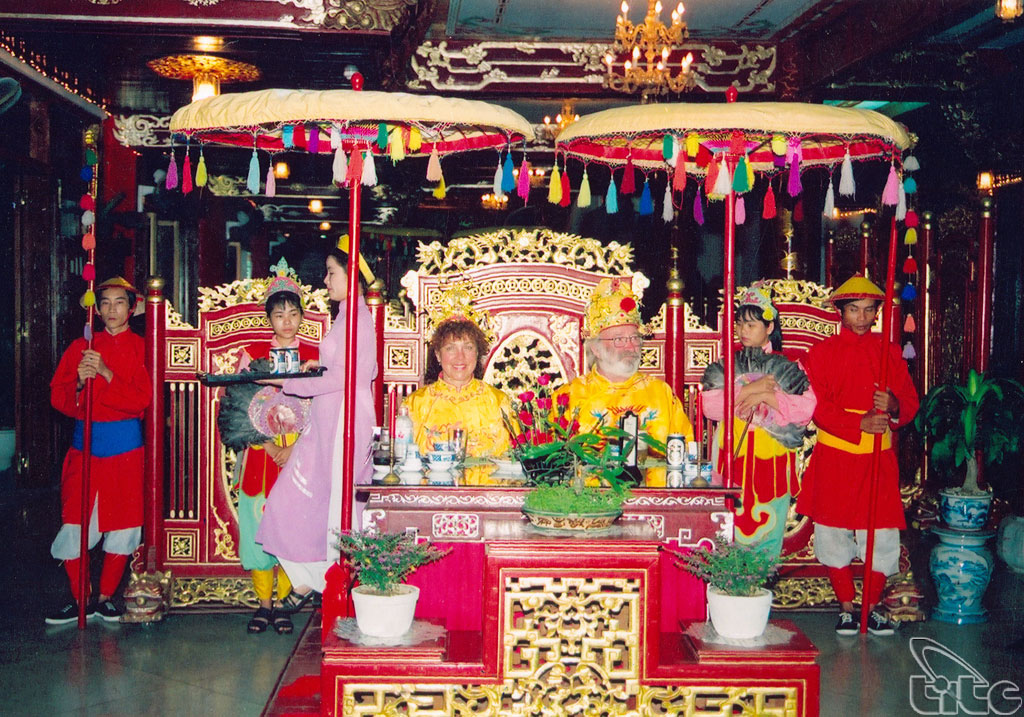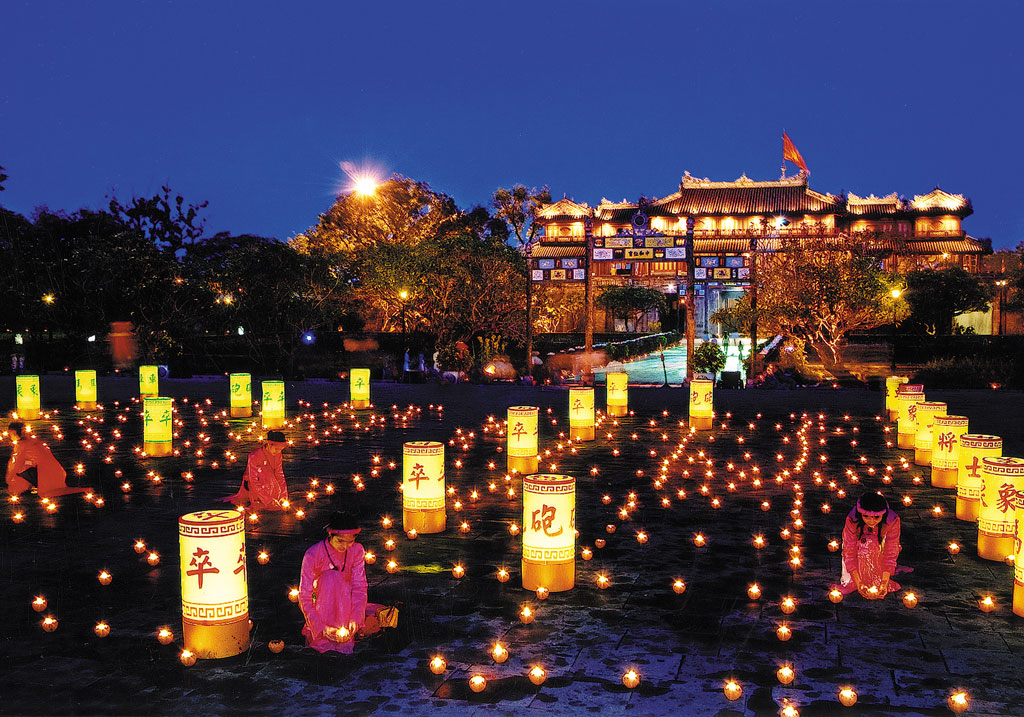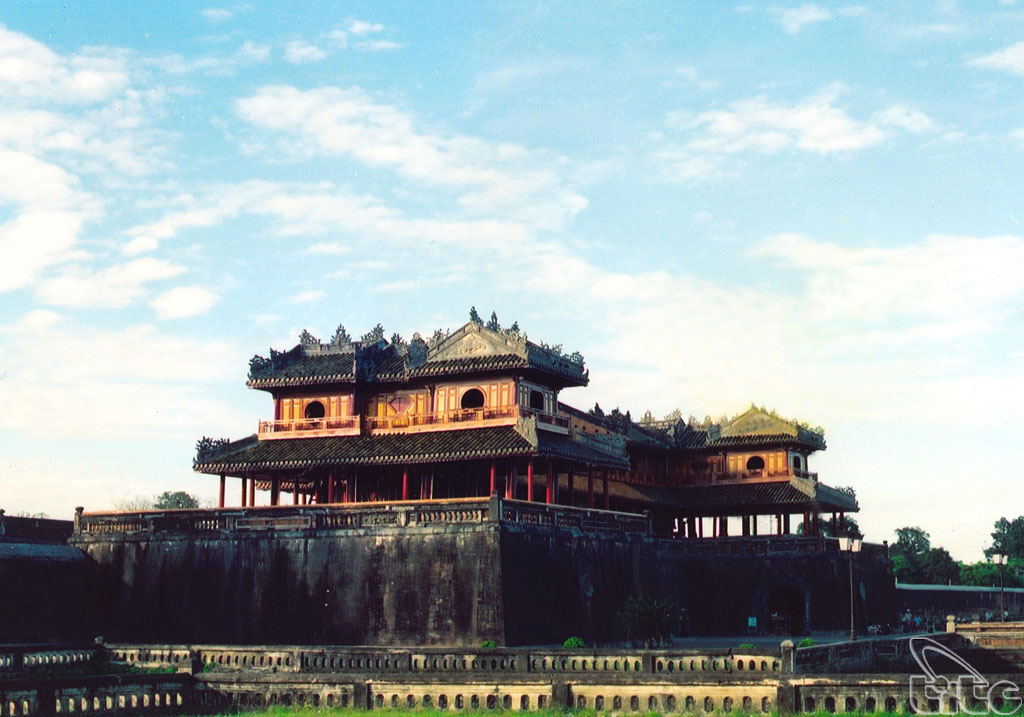

Complex of Hue Monuments lies along the Perfume River in Hue City and some adjacent areas of Thua Thien Hue Province. Hue City constitutes the cultural, political and economic centre of the province, and was the old imperial city of Viet Nam under the Nguyen Dynasty from 1802 to 1945.
History
Since 1306, after the wedding of the princess Huyen Tran of the Tran Dynasty with Che Man, the Cham King, the territories of Chau O and Chau Ly (comprised of Quang Tri, Thua Thien - Hue and part of Northern Quang Nam today) took the name of Thuan Hoa. In the second half of the 15th century, under the reign of King Le Thanh Tong, the name of "Hue" appeared for the first time. In 1636, the residence of the Nguyen Lords was settled at Kim Long (Hue). In 1687, it was transferred to Phu Xuan where is the Citadel today. Early in the 18th century, Phu Xuan became the political, economic and cultural centre of the southern part of Viet Nam. Then, from 1788 to 1801, it became the capital of the Tay Son Dynasty.
From 1802 to 1945, Hue was the capital of unified Viet Nam under the reign of the 13 Nguyen Kings. During these years, architectural works of a high cultural and historic value were built: the Citadel, especially the Imperial City (including 253 constructions), 7 Royal tomb compound of 9 kings of the Nguyen Dynasty, the Esplanade of Nam Giao, the Ho Quyen arena and the Hon Chen Temple.
Cultural values
Located in the centre of Hue, along the Perfume
(Huong) Rivers northern bank, the complex of royal architecture
represents and demonstrates the power of the Nguyen Dynasty's
centralism. Contained in this complex are Kinh Thanh Hue (the Hue
Capital Citadel), Hoang Thanh (the Royal Citadel or Imperial City) and
Tu Cam Thanh (the Forbidden Citadel) clustered together, symmetrically
placed along the longitudinal axis and facing to the south.
The system of walls combines sophisticatedly both
eastern and western architectural styles placed in natural harmony with
Ngu Binh Mount, Perfume River, Gia Vien and Boc Thanh islets. Even
people implicitly consider these natural landscapes as a part of the
complex.
Surrounded by a square wall, almost 600 metres in length on each side, the Imperial City has four gates, of which the south gate (Ngo Mon) is most typical in construction and is widely seen and recognized as the symbol of Hue Citadel. It served not only as the main entrance but was also the place where important events of the dynasty took place. Within the area of the Imperial City, the Forbidden Citadel was the area reserved for daily activities of the royal family.
The main north-south axis, called Than dao (miraculous road), runs through the three walls of the Hue Capital Citadel, Imperial City and Forbidden Citadel and was marked with the important constructions of Hue Citadel. Hundred of small and large buildings were built symmetrically along this axis in harmony with their natural surroundings gives one a feeling of gentle and serenity. These buildings include Nghinh Luong Pavilion (Pavilion for Fresh Air), Phu Van Lau (or the Pavilion of Edicts was the building where Emperor's edicts and lists of successful candidates of Thi Hoi (National Examination) and Thi Dinh (Court Examinations) were publicised), Ky Dai (Flag Tower), Ngo Mon Gate (the main entrance), Thai Hoa Palace (The Throne Palace, or Palace of the Supreme Harmony, was the building for great court's meetings), Can Chanh Palace (the place for every day working of Emperors), Can Thanh Palace (Emperor's Private Palace), Khon Thai Residence (Queen's Private Apartment), Kien Trung Pavilion (the place for daily activities of Emperors)...In the distance, to the west of the Capital Citadel, along the Perfume River, are the famous royal tombs and temples, masterpieces in landscape architecture built by the Nguyen Dynasty. Each royal tomb aimed at creating a living place for royal pleasure before becoming an eternal resting place after the kings death. This resulted in the architecture of royal tombs in Hue being distinguished by unique characteristics.
Each tomb reflects its owners life and character: the magnificence of Gia Longs tomb in the immense landscape of mountains and jungles represents the spirit of a general in war; the symmetry and majesty of Minh Mangs tomb combiners both man-made and natural mountains and lakes and reveals the powerful will and solemn nature of a talented politician who was also an orderly poet; the peaceful and sombre qualities of Thieu Tris tomb reflects the innermost feelings of an outstanding poet who made few achievements in political life; the romance and poetic atmosphere of Tu Ducs tomb evoke the elegant and subtle tendency of a poet rather than the strong characteristic of a politician.
In addition, place-names that embellish for the beauty of the Complex of Hue Monuments can be named as: Huong River, Ngu Binh Mountain, Thien Mu Pagoda, Bach Ma Mountain, the Thuan An and Lang Co Beaches...
At the meeting of the 17th session of the World Heritage Committee (WHC) in Columbia, from the 6th to the 11th of December 1993, UNESCO has come to the decision of recognising the architectural ensemble of Hue as a world cultural heritage. This was a noteworthy event in the cultural history. For the reason that Hue is the first site in Vietnam ever listed in the World Heritage list.
As to the cultural value, a World Cultural Heritage Site, like the Complex of Hue Monuments, has to:
- Be representative of an original artistic achievement, a masterpiece created by Mans hands;
- Have a great value for its building technique or its architecture in a general development plan for a city or in a program for the embellishment of the sight of a world cultural zone;
- Be representative of an architectural ensemble of an important historical period; Be closely related to important events, to ideas or beliefs having a great influence or to famous historical personalities.
In the closing report of the above-mentioned meeting, the WHC has briefly assessed the value of Hue as follows:
"The architecture of Hue, which has been the Capital of a unified Viet Nam, built at about the beginning of the 19th century, combines the oriental philosophy with the traditions of Vietnam. Intimately mingled with the natural environment, the beauty and special richness of the architecture and decorative art of the building are an original image of the Vietnamese monarchy at its most prosperous period".
ATTRACTIONS
|
Monuments outside the Capital Citadel |
Tran Binh Bastion Phu Van Lau Thuong Bac Pavillion Gia Long Tomb Minh Mang Tomb Thieu Tri Tomb Tu Duc Tomb Dong Khanh Tomb Duc Duc Tomb Khai Dinh Tomb Esplanade of Nam Giao Ho Quyen (Royal Arena) Van Mieu (Temple of Literature) Vo Mieu (Temple of Martial Arts) An Dinh Palace Memorial House of Queen Mother Tu Cung Tran Hai Rampart Thien Mu Pagoda Hon Chen Temple Perfume River, Ngu Mountain Truong Tien Bridge. |
|
Monuments inside the Capital Citadel |
Ky Dai Nine Holy Cannons Tinh Tam Lake Quoc Tu Giam Phu Xuan Communal House Hue Museum of Royal Antique. |
|
Monuments inside Hoang Thanh (Imperial Citadel) |
Ngo Mon Thai Dich Lake and Trung Dao Bridge Thai Hoa Palace and Great Rite Courtyard Trieu Mieu Thai Mieu Hung Mieu The Mieu Hien Lam Pavilion Nine Dynastic Urns Dien Tho Palace Truong Sinh Palace. |
|
Monuments inside Tu Cam Thanh (Forbidden Citadel) |
Bronze Cauldron Royal Library (Thai Binh Lau) Duyet Thi Duong. |
USEFUL INFORMATION
Ticket Price (Unit: VND/person/turn):
|
No. |
Sites |
Vietnamese visitors |
International visitors |
||
|
Adult |
Children |
Adult |
Children |
||
|
1 |
Imperial Citadel |
55,000 |
10,000 |
80,000 |
20,000 |
|
2 |
Tu Duc Tomb |
55,000 |
10,000 |
80,000 |
20,000 |
|
3 |
Khai Dinh Tomb |
55,000 |
10,000 |
80,000 |
20,000 |
|
4 |
Minh Mang Tomb |
55,000 |
10,000 |
80,000 |
20,000 |
|
5 |
Dong Khanh Tomb |
30,000 |
|
40,000 |
|
|
6 |
Thieu Tri Tomb |
30,000 |
|
40,000 |
|
|
7 |
Hue Museum of Royal Antique |
30,000 |
|
40,000 |
|
|
8 |
Hon Chen Temple |
30,000 |
|
40,000 |
|
|
9 |
An Dinh Palace |
30,000 |
|
40,000 |
|
Package
tour ticket:
|
No. |
Tours |
Vietnamese visitors |
International visitors |
||
|
Adult |
Children |
Adult |
Children |
||
|
1 |
Imperial Citadel Hue Museum of Royal Antique |
75,000 |
|
105,000 |
|
|
2 |
Imperial Citadel Khai Dinh Tomb Minh Mang Tomb (Free of charge to visit Hue Museum of Royal Antique) |
125,000 |
20,000 |
180,000 |
45,000 |
|
3 |
Imperial Citadel Tu Duc Tomb Khai Dinh Tomb Minh Mang Tomb(Free of charge to visit Hue Museum of Royal Antique) |
155,000 |
25,000 |
225,000 |
55,000 |
Some cultural activities are presented at Dai Noi (Hue Imperial Citadel), no extra admission:
- The Change of Guards ceremony: take place at Ngo Mon
from 09:00 to 09:30 (daily held);
- Performance of court music (Small music) in front of Thai Hoa
Palace (daily held) at:
* 08:00 10:30 and 14:00 16:00
- Performance of court music (Great music) in front of The
Mieu (daily held) at:
* 09:00 11:00 and 14:30 16:30
- Performance of Hue chamber music (Ca Hue) is daily held in Truong Sanh
Residence
There is no performance in heavy rainy weather.
Opening time:
+ Summer: from 6:30 to
17:30
+ Winter: from 7:00 to 17:00
+ Art performances:
- Ca Hue on the Perfume River: please contact Center for
Ca Hue Performance Management (22B Le Loi St., Hue City; Tel: (84-234) 3831 575; Fax:
(84-234) 3837 400).
- Vietnamese Court Music performances. Contact:
Duyet
Thi Duong Theater
Add: Hue Imperial Citadel, Thuan Thanh Ward, Hue City
Tel: (84-234) 3514 989/ 3522 070
Fax: (84-234) 3522 070
Minh Khiem Duong Theater
Add: King Tu Duc Tomb, Thuong Ba Hamlet, Thuy Xuan Commune, Hue City
Telephone: (84-234) 3836 427
Transport service:
There are electric cars from Hien Nhon Gate (Exit way of
the Imperial Citadel) to the Hue Museum of Royal Antique (free of charge until the end of 2013).
Add: 23 Tong Duy Tan St., Hue City
Tel: (84-234) 3530 840/3523 237/3512 751
Fax: (84-234) 3526 083
Email: huedisan@gmail.com
Website: http://www.hueworldheritage.org.vn
Contact: |










| View in 2024: 46907 |
Webmaster: Tourism Information Technology Centre
Address: 80 Quan Su, Hoan Kiem Dist., Ha Noi
Experimental version
License number: 85/GP-TTΔT date of issue July 02, 2015